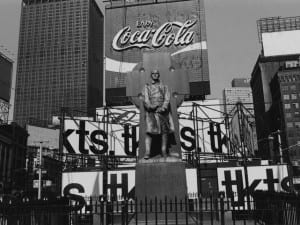The European Media Art Festival has established itself as one of the most influential forums of international media art. For the 2017 edition, it collates a diverse selection of artists and contributors under the title of Push: Living in the Hyper Information Age. This theme aptly asks viewers to confront issues concerning the digital, such as does the digital image alter how we relate to the body, empathy and violence. As a key meeting point for artists, curators, distributors, galleries, experts and enthusiasts, the festival is a prime event in which to discuss recent developments in the aesthetics of media art.
This year, as with every edition, EMAF will provide its visitors with a current overview of experimental films, installations, performances, digital formats and hybrid forms, ranging from personal and political subjects or formal experiments to provocative statements. The festival sees itself as a place of experimentation where extraordinary works and ventures are created and presented – something that is reflected in the Kunsthalle Osnabrück exhibition curated by Hermann Nöring and Franz Reimer (open from 26 April onwards).
In this edition, featured artists do not provide definitive answers. Instead, they give an indication of whether reality is discernible behind the images, or which possibilities of reflection, critical focus and societal relevance arise. Opening the presentation is Stanza’s The Reader, a complex sculpture that will enable viewers to experience a wealth of data flows. O.T. 875 by Stefan Reiss illustrates the potential opened up by digital media, while Ruben Aubrecht prints out the digital code of a one-minute broadcast in Television Signal (One Minute). The result is a collection of 60 books full of zeros and ones that demonstrate the vast quantities of data that occupy the media space.
Elsewhere, the topic of the selfie is also addressed. Artist Adam Basanta’s interactive installation, A Truly Magical Moment, asks if a selfie is a certificate of authenticity or just a copy of staged media images. The theme of empathy is also broached in Thomas Hirschhorn’s Touching Reality, while Stefan Panhans’ video piece focuses on the comic/absurd movements and dysfunctionalities of avatars and game figures. In addition, practitioners Alexandra Ehrlich Speiser and Mario Pfeifer devote themselves to the 3D printing of weapons, to which they attribute not only enormous disruptive power, but also a potential for glitches and self-destruction.
EMAF will also work with the Media Design Hochschule Berlin to present several pieces of work that are dedicated to the topic of virtual reality. Switch Reality invites visitors to view the Kunsthalle through VR glasses – as an exact replica of itself. After a while, however, they are inundated by news images and digital effects. Visitors will be able to view more works on this topic at the BBK Kunstquartier.
Lastly, the EMAF Media Campus INIT returns to showcase brand-new pieces by young, emerging media artists. This year, work will be exhibited by students from the University of the Arts Bremen, KHM | Academy of Media Arts Cologne, Osnabrück University of Applied Sciences (Media & Interaction Design) and Offenbach University of Art and Design – at Kunsthalle Osnabrück, Galerie hase29 and Bürgergehorsam Tower.
European Media Art Festival, 26-30 April, venues across Osnabrück. The EMAF Exhibition continues until 21 May, Kunsthalle, Osnabrück.
Find out more: www.emaf.de.
EMAF featured artists Stanza and Adam Basanta will both exhibit in the Aesthetica Art Prize Exhibition, 26 May – 10 September at York Art Gallery. For details, visit www.aestheticamagazine.com/art-prize/exhibition-2017.
For the latest news in contemporary art and culture, follow us on Facebook, Twitter and Instagram.
Credits
1. Stanza, The Reader. Courtesy of the artist.





